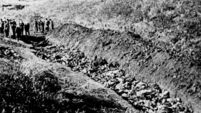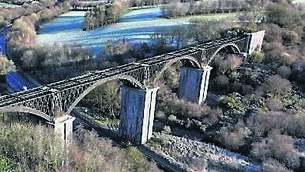Irish Examiner view: Nazi photo revelation shows the power of AI and rigorous research
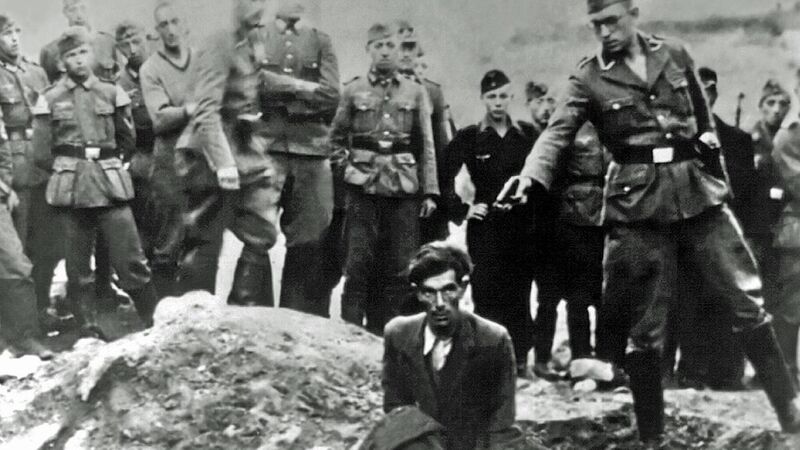
For decades, this photo of a Nazi about to shoot a man in Berdychiv, Ukraine was wrongly captioned 'The last Jew in Vinnitsa' — referring to a town 90km away. Establishing the correct location was a key step towards identifying the murderer. Picture: Galerie Bilderwelt/Getty
So-called artificial intelligence gets a lot of bad publicity, some of it from this publication and much of it deserved.
However, there are occasional instances where the technology — not necessarily the generative part such as ChatGPT that devours electricity and clean water — can make a significant, positive difference.
Such a difference emerged in recent days, when a German historian published research showing the identity of a Nazi murderer who had been photographed in the act of putting a gun to the head of a Jewish man in occupied Ukraine.
The photograph, which had been incorrectly captioned as 'The Last Jew in Vinnitsa', highlights the callous brutality of the German army in the Second World War.
A row of Nazi soldiers lines up a few metres away from a mass grave as a prisoner, seemingly resigned to his fate, sits at the edge.
HISTORY HUB
If you are interested in this article then no doubt you will enjoy exploring the various history collections and content in our history hub. Check it out HERE and happy reading
The killer has a pistol raised ready to fire. He’s posing so the photographer depicts him as some sort of strongman. His identity was long a mystery but, thanks to the work of Jurgen Matthaus and some volunteers well versed in open-source investigations, it is known now.
Matthaus — no fly-by-night, having been head of research at the US Holocaust Memorial Museum for 30 years — found the location by, among other things, analysing details in the image itself.
Buildings in the background, compared with existing aerial maps of the region, historical and contemporary, showed that the murder didn’t take place in Vinnitsa but rather some 90km south in Berdychiv.
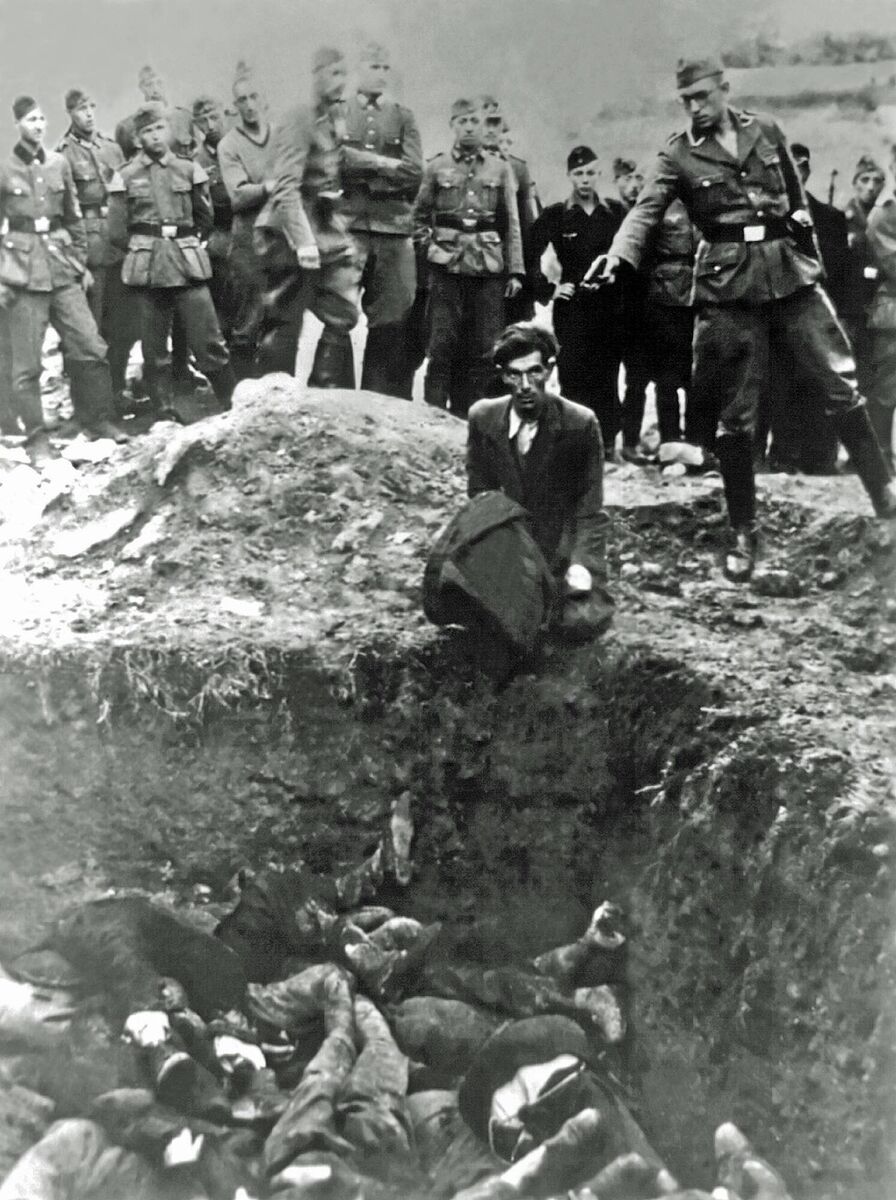
Last year, Matthaus published his research establishing the date and location of the killing and, when it entered the media in Germany, a family came forward who thought the killer was one of their relatives (and that’s no minor thing to realise).
A team of volunteers used AI software to analyse family photos and compare the infamous image, eventually establishing with 99% accuracy that the man was indeed Jakobus Onnen, born in 1906, a teacher of French, English, and PE.
He had joined the National Socialist Party in 1933, just before Hitler’s ascension, and was killed in action in 1943.
Matthaus is now trying to establish the identity of the man murdered at Berdychiv, which would bring about some sense of final closure to this grim, cruel incident. He has said he may need AI for this, but there is no suggestion he believes it will solve every mystery.
It must be noted that AI only came in at the end, and even then required the extensive direction and control of human experts.
The bulk of it was done by good, old-fashioned human doggedness and archival research, some of which was enhanced by the use of digital tools.
For example, the location of the murder was determined in part by the comparison of the treeline in the background of the photo with existing digital maps, both modern and historical.
This sort of digitally-enhanced sleuthing, by the way, is commonplace in investigative journalism but is also carried out by people investigating war crimes or trying to verify the time and location of images or videos.
Matthaus’ work on this was able to pinpoint a likely date for the murder, as well as that it happened in the late afternoon.
The case shows us a number of things.
: There is no real replacement for human ingenuity or insight, regardless of whatever the tech companies would have you think. Technology, whatever its form, is best utilised as a tool rather than a replacement. Matthaus himself said: “Digital tools in the humanities have massively increased in use, but it’s usually for the processing of mass data, not so much for qualitative analysis. This is clearly not the silver bullet — this is one tool among many. The human factor remains key.” And long may it continue.
: Dogged investigative work, like some of the work you see in this publication, can do unparalleled public good. The process used by Matthaus in his investigation is being replicated in newsrooms all over the world.
: The ordinariness of people’s lives and backgrounds can conceal extreme actions, even if they inevitably get found out. It took 80 years to establish Onnen’s crime, but established it was. Light blows away the shadows one way or the other.
At a time when extremism is increasingly mainstream, that’s something to bear in mind. And if AI ends up bringing war criminals to justice, maybe it will prove useful after all.
When one thinks of war, one likely thinks traditionally of large-scale engagements and devastation, with swathes of boots on the ground, vehicles on the move, heavy armour pounding the dust out of innocents and combatants alike.
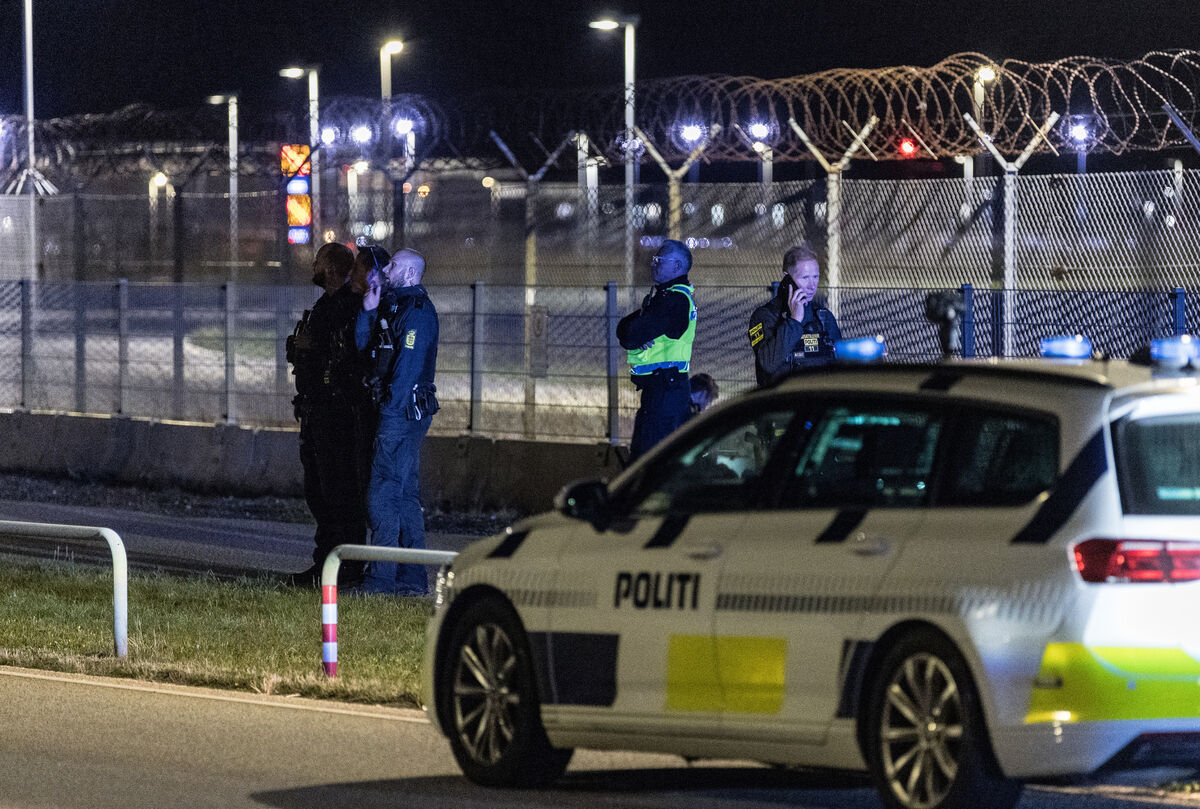
Certainly, America’s Pete Hegseth, in his rant to generals last week, is thinking of physical engagements — talking about “highest male standards” for physical strength and
fitness, for example.
He would have been chastened — if such a personality could ever accept being wrong — by the number of people pointing out that modern warfare now involves people of not necessarily stellar fitness levels piloting drones and causing significant damage in the process.
And Ireland — indeed Europe, as reported on our front page on Friday — is not ready for this.
While the technology exists to intercept and repel drone attacks, it is by no means widespread, and certainly this country, in the Atlantic at the far ends of Europe, is not equipped for any such conflict.
We don’t even have enough sailors to put our entire naval fleet to sea, and a drone incursion is as likely to come from the West, launched from a ship, as it is to cross Europe.
With our strategic position and the amount of undersea cables off our coast, we really need to do better — and sooner rather than later.




